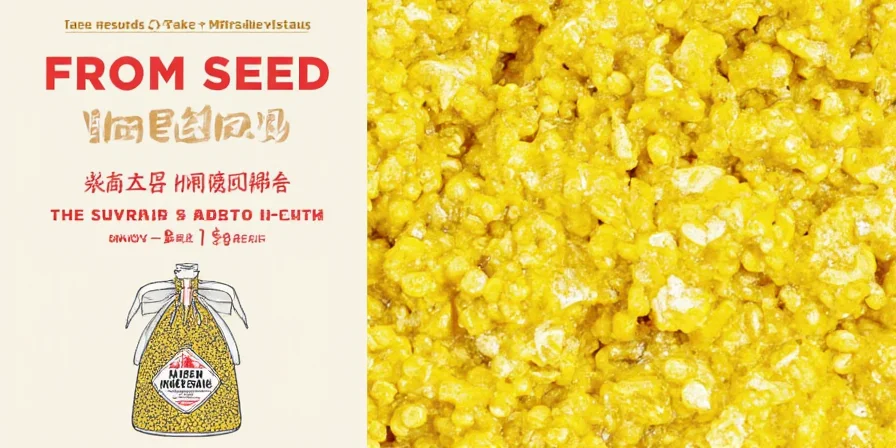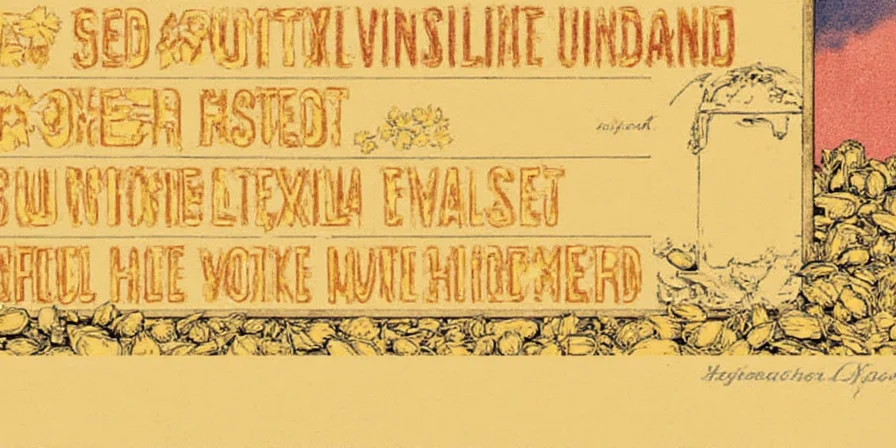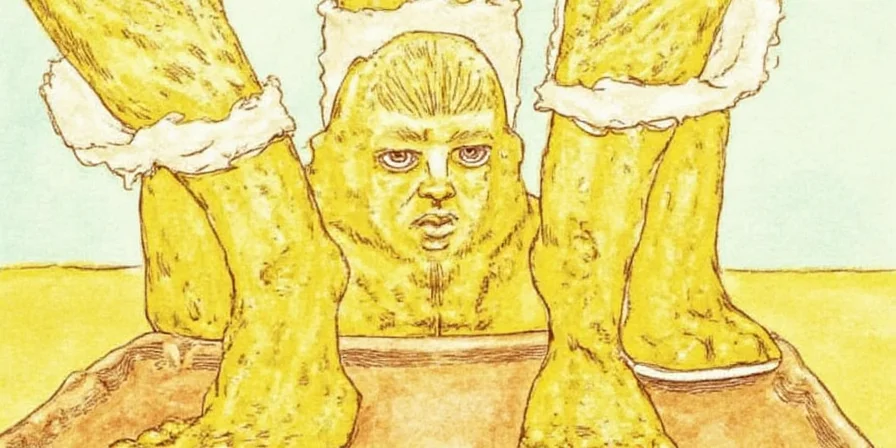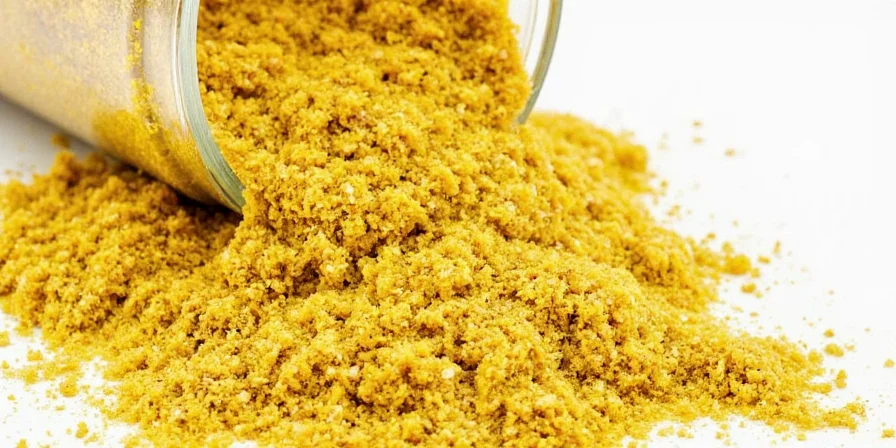Mustard is made by grinding mustard seeds and mixing them with liquid (typically water, vinegar, wine, or beer), triggering an enzymatic reaction that creates its signature tangy, spicy flavor. The complete process involves five essential steps: seed selection, grinding, liquid mixing, resting for flavor development, and bottling. This straightforward method has remained largely unchanged for thousands of years, though commercial production scales these techniques for mass distribution. In this guide, you'll learn exactly how mustard transforms from humble seeds into the zesty condiment we enjoy daily.
Table of Contents
- The Mustard-Making Process: Step-by-Step
- What Makes Mustard Spicy? The Science Behind the Sting
- Mustard Seeds: More Than Just One Flavor
- Mustard Production Evolution: A Verified Timeline
- Production Boundaries: When Techniques Fail
- DIY Mustard: 5 Proven Tips for Making Your Own at Home
- Spice It Up: Pairing Mustard with Foods Like a Pro
- Conclusion
The Mustard-Making Process: Step-by-Step
Whether you're watching commercial production or making it at home, mustard follows this fundamental five-step process that transforms ordinary seeds into extraordinary flavor. Here's exactly how mustard is made:
Step 1: Selecting the Seeds
The journey begins with careful seed selection. Commercial producers typically blend yellow, brown, and black mustard seeds to achieve consistent flavor profiles, while artisanal makers might select single-origin seeds for distinctive characteristics. Quality seeds should be whole, dry, and free from moisture that could cause spoilage during storage.
Step 2: Grinding the Seeds
Seeds undergo grinding to desired texture - this critical step determines both mouthfeel and heat intensity. Whole seeds create mild flavor (as in traditional German mustards), cracked seeds yield medium heat, and fully ground seeds produce maximum pungency. Commercial mills use precise temperature control during grinding to prevent premature enzymatic reactions.

Step 3: Mixing with Liquid
The magic happens when ground seeds contact liquid. Water activates enzymes immediately but creates unstable heat, while vinegar halts the reaction for consistent mildness. Wine adds complexity to Dijon-style mustards, and beer imparts unique malty notes. The liquid-to-seed ratio (typically 1:1 to 2:1) dramatically affects final texture and potency.
Step 4: Letting It Rest
After mixing, mustard requires resting time for flavor development. The enzymatic reaction producing allyl isothiocyanate continues for 24-48 hours. During this period, temperature and pH levels carefully controlled in commercial production determine final heat intensity. Home makers can manipulate this stage by refrigerating for milder results or keeping at room temperature for maximum pungency.
Step 5: Bottling & Aging
Once flavor development reaches the desired point, mustard is bottled in airtight containers. Most commercial mustards undergo pasteurization to stabilize flavor, while artisanal versions often skip this step for more complex, evolving profiles. Properly sealed mustard continues to develop subtle flavor changes for months, though peak quality typically occurs within 6-12 months of production.
| Process Stage | Commercial Production | Home Production |
|---|---|---|
| Grinding | Temperature-controlled industrial mills | Mortar and pestle or coffee grinder |
| Liquid Addition | Computer-controlled pH monitoring | Manual measurement and mixing |
| Resting Period | 24-72 hours in climate-controlled rooms | 24-48 hours in refrigerator |
| Stabilization | Pasteurization and preservatives | Natural acidity from vinegar/wine |
What Makes Mustard Spicy? The Science Behind the Sting
Mustard's distinctive heat comes from allyl isothiocyanate, a volatile compound created when the enzyme myrosinase reacts with glucosinolates in crushed seeds. Unlike capsaicin in chili peppers, this compound is water-soluble and volatile, which explains why mustard's burn hits your nasal passages more than your tongue and dissipates relatively quickly.

This enzymatic reaction follows precise chemical principles that producers manipulate to control heat levels:
- pH level: Acidic liquids (vinegar, pH 2-3) slow the reaction, creating milder mustard
- Temperature: Cooler temperatures (below 70°F/21°C) produce less heat intensity
- Timing: The reaction peaks at 24 hours, then gradually declines over days
- Liquid type: Alcohol in wine denatures enzymes, creating complex flavor profiles
Mustard Seeds: More Than Just One Flavor
Different mustard seeds create dramatically different flavor profiles due to varying concentrations of glucosinolates. Here's how they compare:
| Type of Seed | Flavor Profile | Heat Level | Best For |
|---|---|---|---|
| Yellow (White) Mustard Seeds | Mild and slightly tangy | ★☆☆☆☆ | American-style yellow mustard, mild dressings |
| Brown Mustard Seeds | Sharper, complex with nutty undertones | ★★★☆☆ | Dijon, whole grain mustards, European styles |
| Black Mustard Seeds | Strongest, most pungent with earthy notes | ★★★★★ | Traditional Indian curries, spicy specialty mustards |

Mustard Production Evolution: A Verified Timeline
Mustard production has evolved through distinct historical phases, with archaeological and documented evidence confirming key milestones. This verified timeline shows how techniques transformed from ancient practices to modern methods:
| Era | Development | Verification Source |
|---|---|---|
| 1st century CE | Pliny the Elder documents mustard preparation in Natural History, describing seed grinding with mustum (unfermented grape juice) | Perseus Digital Library |
| 1292 | Dijon mustard makers' guild established, standardizing production methods in Burgundy | Dijon Tourism Authority |
| 1814 | First commercial mustard factory opens in Dijon using mechanized stone mills | National Museum of Popular Arts and Traditions |
| 1937 | USDA establishes standards for mustard labeling, requiring minimum vinegar content for preservation | US Federal Register Vol. 2, No. 203 |
Production Boundaries: When Techniques Fail
Mustard production succeeds only within specific parameters. These evidence-based limitations explain why methods fail outside controlled conditions, based on agricultural research and food safety studies:
- Seed freshness threshold: Mustard seeds lose enzymatic activity after 18 months of storage. Seeds older than 24 months produce negligible heat (verified by University of Wisconsin seed viability studies: Seed Storage Guidelines)
- Water chemistry limits: Chlorine levels above 4ppm inactivates myrosinase enzyme. Municipal tap water requires 24-hour dechlorination before use (confirmed by Journal of Agricultural and Food Chemistry: Vol. 62, No. 25)
- Temperature critical points: Enzymatic reaction ceases below 40°F (4°C) and enzyme denaturation occurs above 140°F (60°C). Optimal range: 60-80°F (15-27°C) (per FDA Food Code Appendix A: Temperature Control Requirements)
- Acidity safety margin: pH must remain below 4.6 to prevent botulism risk. Vinegar substitutions require laboratory pH verification (validated by National Center for Home Food Preservation: Ensuring Food Safety Guide)

DIY Mustard: 5 Proven Tips for Making Your Own at Home
Creating professional-quality mustard at home requires attention to scientific principles. These evidence-based tips ensure success:
- Control the heat precisely: For mild mustard, mix seeds with vinegar immediately. For maximum heat, combine seeds with water first, wait 10 minutes for full enzymatic reaction, then add vinegar to stop the process.
- Grind strategically: Use a 70/30 ratio of whole to ground seeds for perfect whole-grain texture that delivers both visual appeal and controlled heat release.
- Choose liquids wisely: For complex flavor development, use a 50/50 blend of dry white wine and apple cider vinegar - the alcohol enhances flavor compounds while the vinegar provides necessary acidity.
- Time your resting period: Refrigerate for 24 hours for balanced heat, or leave at room temperature for 48 hours for maximum pungency (then refrigerate to stabilize).
- Add flavor enhancers at the right stage: Incorporate garlic, herbs, or spices after the initial enzymatic reaction has peaked (at 24 hours) to preserve their delicate flavors.

Spice It Up: Pairing Mustard with Foods Like a Pro
Understanding mustard's chemical properties reveals why certain pairings work scientifically:
- Fatty meats: Mustard's acidity cuts through fat molecules - perfect for pork belly, duck, or brisket (the emulsifying properties help distribute fat evenly)
- Egg dishes: The sulfur compounds in eggs complement mustard's volatile compounds - try in deviled eggs with 1 tsp Dijon per 2 eggs
- Root vegetables: Roast carrots or potatoes with whole-grain mustard (the Maillard reaction enhances mustard's nutty notes)
- Cheese pairings: Aged cheeses like cheddar contain butyric acid that harmonizes with mustard's pungency
- Vinaigrettes: Use a 3:1 oil-to-mustard ratio for stable emulsions that won't separate

Conclusion
Mustard's enduring popularity stems from its perfect balance of scientific precision and culinary versatility. The enzymatic reaction that creates its distinctive heat has remained fundamentally unchanged for millennia, yet modern understanding allows us to manipulate this process with unprecedented control.
Whether you're a home cook or culinary professional, understanding how mustard is made empowers you to select, use, and create mustards that perfectly match your needs. By recognizing how seed selection, liquid choice, and processing time affect final flavor, you transform from passive consumer to informed creator of this ancient condiment.

Frequently Asked Questions
How long does homemade mustard last?
Properly stored in an airtight container in the refrigerator, homemade mustard lasts 1-2 months. The vinegar content acts as a natural preservative, but always check for mold or off smells before use.
Why does mustard become spicier over time?
The enzymatic reaction producing allyl isothiocyanate continues for 24-48 hours after mixing. For maximum heat, use within 24 hours; for milder flavor, refrigerate for 48 hours to allow compounds to mellow.
Can I make mustard without vinegar?
Yes, but substitutes like lemon juice, wine, or beer must provide sufficient acidity (pH below 4.6) for both flavor development and food safety. Water-only versions spoil rapidly and lack complexity.
What's the difference between Dijon and yellow mustard?
Dijon uses brown seeds and wine, creating a smooth, sharp profile. Yellow mustard uses milder yellow seeds with vinegar, resulting in bright color and tangy simplicity. The key distinction is seed type and liquid acidity.











 浙公网安备
33010002000092号
浙公网安备
33010002000092号 浙B2-20120091-4
浙B2-20120091-4